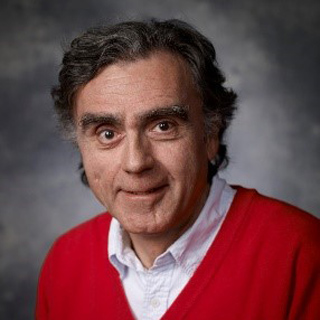Dr. Massimo Fischetti

Massimo (Max) V. Fischetti is a Texas Instruments Distinguished Professor in Nanoelectronics in the department of Materials Science and Engineering, Eric Jonsson School of Engineering and Computer Science at the University of Texas at Dallas. Before joining UT-Dallas, Dr. Fischetti worked at the IBM T. J. Watson Research Center for over 20 years, and as professor at the University of Massachusetts at Amherst. Dr. Fischetti has published more than 250 journal or conference proceedings articles with more than 17,000 citations. He was elected Fellow of the America Physical Society in 1997 and received the IEEE Cledo Brunetti Award in 2011. His main research accomplishments include the co-development of the first full-band Monte Carlo computer program ‘DAMOCLES’ to study the performance of small semiconductor devices; the calculations of electronic transport in strained Si; the study of the effect of high-dielectric-constant insulators on the performance of small Si transistors; and the study of ‘out-of-plane’ ionic vibrations (‘flexural phonon’) in some classes two-dimensional materials and their effect on charge transport. Dr. Fischetti is currently leading a research group focusing on the electronic structure and transport in nanometer-scale structures and devices.


The general scientific and technological context of Dr. Fischetti’s group’s interests is the continuing scaling of the dimensions of the transistors used in electronic devices that have shaped society and human life in the past decades. As the dimensions of these transistors have shrunk from micrometers in the 1970s to nanometers in the 2010s, the physics that controls the transport of electrons in semiconductors has become increasingly more complex and interesting. Electronic transport in “large” semiconductor devices can be studied using simplifying assumptions that are valid in such large devices, mainly, the assumption of incoherent ‘semiclassical’ transport — amenable to the Boltzmann picture — and of a “bulk-like” electronic structure of the conductive channel, assumption which permits the use of either the effective-mass approximation or of a “full-band” (but still bulk) description. Neither of these assumptions is valid in the “sub-5 nm era”: Novel materials (such as 2D materials and topological insulators), the small size of the devices, the strong quantum-confinement effects, and the likelihood of quasi-coherent transport require major changes in the theoretical approach use to study electronic transport. Dr. Fischetti’s research proceeds on three fronts in order to tackle these problems: Band-structure calculations (using Density-Functional Theory and Empirical Pseudopotentials), semi-classical electronic transport (using Monte Carlo simulations), and quantum transport (based on Empirical Pseudopotentials).




